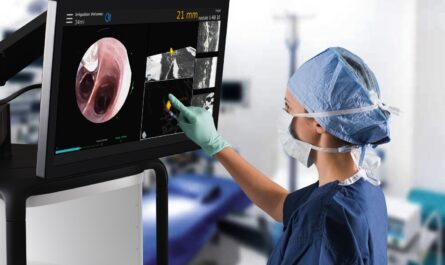
Endometriosis is a common gynecological condition that affects millions of women worldwide. It occurs when tissue similar to the lining of the uterus grows outside the uterine cavity, usually attaching to other organs in the pelvic region. While it isn’t life-threatening, endometriosis can cause severe pain and fertility issues for many sufferers. Given its prevalence and impact on quality of life, ongoing research aims to better understand this disease and develop more effective treatment approaches. In this article, we explore the various options available for managing endometriosis.
Conservative Treatment Methods
For mild cases of endometriosis, doctors may first recommend conservative treatment methods to alleviate symptoms without surgery. These include:
– Pain relievers: Over-the-counter medications like ibuprofen, naproxen, and acetaminophen can help reduce pelvic pain and cramping associated with endometriosis.
– Birth control pills: Oral contraceptives contain estrogen and progestin to prevent ovulation and thin the uterine lining. This suppresses endometrial growth and associated pain.
– Progestin therapy: Progestin-only drugs like norethindrone treat endometriosis by thickening cervical mucus and thinning the uterine lining.
– Lupron injections: Leuprolide acetate (Lupron) is a GnRH analogue used to temporarily induce menopause. By lowering estrogen levels, it reduces endometrial tissue growth over a 6 month period. Side effects can include hot flashes and bone density loss.
While conservative treatments may relieve mild symptoms, they do not treat the underlying disease process and symptoms often return after stopping medication. Surgery provides more lasting management for moderate to severe cases.
Surgical Treatment Approaches
The main surgical option for endometriosis is laparoscopic surgery to directly observe and remove endometrial growths via small incisions in the abdomen. The extent of surgical intervention depends on several factors, including:
– Location and severity of endometriosis: Deep infiltrating endometriosis involving the bowels or bladder may require more extensive surgery.
– Fertility desires: Surgery aims to remove all visible endometriosis to relieve symptoms and potentially restore fertility.
– Prior treatment history: Repeated surgeries may be needed if endometriosis recurs following initial procedures.
Common surgical techniques include:
– Ablation/excision: Using lasers, electrosurgery or scissors to cut or vaporize endometrial growths.
– Hysterectomy: Removal of the uterus to fully eliminate endometrial tissue in severe, multifocal cases.
– Bowel/bladder resection: Sections of the bowels or bladder are removed if endometriosis has infiltrated these tissues.
Post-surgical recovery takes 4 to 6 weeks followed by hormone therapy to reduce recurrence risks over the following months. Surgery provides the best chance of long-term symptom control and fertility in moderate to severe endometriosis. However, the disease may recur in up to 50% of cases.
Alternative Treatment Options
For those seeking non-surgical solutions or as an adjuvant to surgery, other therapeutic approaches under investigation include:
Traditional Chinese Medicine
Acupuncture, herbs and dietary therapies aim to restore balance and address underlying causes of pain and infertility from an Eastern medicine perspective. Research on its efficacy is still emerging.
Complementary Therapies
Including massage therapy, yoga, meditation and lifestyle changes like a low-fat diet may aid in reducing stress and managing endometriosis symptoms. However, more data is still needed.
Emerging Drug Therapies
Newer pharmaceutical treatments in clinical trials target factors like inflammation and angiogenesis involved in endometrial growth. Elagolix is an oral gonadotropin-releasing hormone (GnRH) antagonist recently approved to treat endometriosis-related pain. Others on the horizon may revolutionize medical management options in the future.
Considerations for Treatment
When developing a treatment plan, factors such as symptom severity, fertility goals, prior response to therapies, lifestyle and tolerability of side effects must all be weighed. A multidisciplinary approach involving a gynecologist, endometriosis specialist, dietitian, acupuncturist and mental health professional may provide the best individualized care. Ongoing self-care practices and a strong support system can also help maintain overall well-being during endometriosis management. While the root cause remains unknown, ongoing research continues to enhance our understanding and expand options for effectively treating this debilitating disorder. With a collaborative treatment approach, most women can gain better control over their symptoms and quality of life.
*Note:
1. Source: Coherent Market Insights, Public sources, Desk research
2. We have leveraged AI tools to mine information and compile



